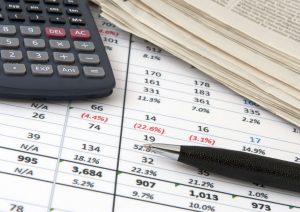Content

In addition, there is a recession in place and the board has suspended dividend payment because the firms cash flow has been affected. In such a situation, the preferred shares would have accumulated dividends. When firm ABC finally decides to pay out dividends to its shareholders, it must first start with the preferred shareholders. This means they are paid all their accumulated dividends before the other shareholders are given. This must be paid in full because if not, it will continue to create the same obligation to the company. The $1,000,000 value of the dividend is determined by multiplying the 50,000 shares to be issued (10% × 500,000 outstanding shares) by $20 .

The term property dividend refers to the formal distribution of an asset other than cash to holders of preferred or common shares of stock. A property dividend can take many forms, including real estate, items held in inventory, equipment, and even investments held by the company. If the Kid Again Toy Company had an extremely profitable year due to the launch of a new female action figure series, it could decide to share some of its impressive earnings with its shareholders. Instead of increasing its regular dividend payment per share, it could issue a special dividend of $1.00 per share. If a company had an extremely profitable year, it could issue its shareholders a special dividend, which is a dividend that it pays in addition to its regular dividend payment. A special dividend or an extra dividend is usually a one-time payment to a company’s shareholders and the amount of is usually greater. As your business flourished over the years and you’ve earned profits, you most likely have left money in your company.
Payment Date
If you’re making payments to more than one person, you may want to enter a separate line for each person for your records. You’ve successfully recorded the proposed dividend value and this appears on your Balance Sheet Report as a liability https://www.bookstime.com/ and also updates the Equity section of the report. Smaller businesses tend not to use dividends, as it is generally more important for most of the profits to be rolled back into the business and used in further development and growth.

A company may also elect to reinvest the money into the company in areas such as advertising, payroll expansion or acquiring new equipment. This allows the company to increase performance and generate additional profits in the future, and should be balanced against the potential benefits of paying dividends. The stockholders for a company may have invested in the company because of a track record of dividends or projections for strong dividend performance. In these situations, a company may opt for larger dividend payments to meet the expectations of stockholders and keep interest in stock high to maintain its value. When a company is successful, its leaders may decide to pay out dividends to shareholders, so it’s important to account for these dividends in official records. Stakeholders may request to examine financial records, or regulatory bodies may require them.
Process of dividend distribution
On May 1, the Board of Directors of Triple Play authorized payment of a $50,000 cash dividend on June 30 to the stockholders of record on May 25. On May 1, the date of declaration, the value of the dividend to be paid is deducted from retained earnings and set up as a liability in a separate dividends payable account. In addition to board approval, companies are also required to have adequate earned capital and assets that can be distributed before the property dividend is declared.
- There is no change in total assets, total liabilities, or total stockholders’ equity when a small stock dividend, a large stock dividend, or a stock split occurs.
- We’ll tackle that in the next section after you check your understanding of accounting for cash dividends in general.
- The company also credits the cash account, which decreases the amount of money in the cash account.
- When a company is profitable at the end of the year, there are a number of options for the amount.
- If the fair market value of the assets distributed is different from the book value of assets, then the company has to record the variance in the form of the gain or loss.
- If a dividend payout is lean, an investor can instead sell shares to generate the cash they need.
Get instant access to video lessons taught by experienced investment bankers. Learn financial statement modeling, DCF, M&A, LBO, Comps and Excel shortcuts. The ex-date, or ex-dividend date, is the date on or after which a security is traded without a previously declared dividend or distribution. Ex-dividend is a classification in stock trading that indicates when a declared dividend belongs to the seller rather than the buyer. Adam Hayes, Ph.D., CFA, is a financial writer with 15+ years Wall Street experience as a derivatives trader.
Chapter 10: Stockholders’ Equity, Earnings and Dividends
We’ll tackle that in the next section after you check your understanding of accounting for cash dividends in general. When a dividend is declared by the board of directors, the company will credit dividends payable and debit an owner’s equity account called Dividends or perhaps Cash Dividends. The declaration date is also referred to as the announcement date since a company notifies shareholders and the rest of the market. The declaration date is the date on which a company officially commits to the payment of a dividend. On that date, a liability is incurred and the Cash Dividends Payable is used to record the amount owed to the stockholders until the cash is actually paid.
Having cumulative preferred stock simply reinforces the preference preferred stockholders receive when a dividend is declared. If a company has issued cumulative preferred stock and does not declare a dividend, the company has dividends in arrears. Although not a liability, the amount of any dividends in arrears must be disclosed in the financial statements. To illustrate how these three dates relate to an actual situation, assume the board of directors of the Allen Corporation declared a cash dividend on May 5, .
Understanding Dividends
Dividend sustainably is how likely it is that a company will be able to maintain or increase its dividend payments. Some companies have grown their dividend payments for over 25 consecutive years, and are called dividend aristocrats.

The yield is determined by dividing the annual dividend on each stock by the price per share. The announced dividend, despite the cash still being in the possession of the company at the time of announcement, creates a current liability line item on the balance sheet called “Dividends Payable”. When the board of directors declares a dividend, it will result in a debit to Retained Earnings and a credit to a liability such as Dividends Payable.
CenterPoint Accounting
Dividend payments and amounts are determined by a company’s board of directors. A dividend is the distribution of corporate earnings to eligible shareholders. The dividend yield is the dividend per share and is expressed as dividend/price as a percentage of a company’s share price, such as 2.5%.
- This is a method of capitalizing a portion of the company’s earnings .
- The day on which the Hurley board of directors formally decides on the payment of this dividend is known as the date of declaration.
- In these situations, a company may opt for larger dividend payments to meet the expectations of stockholders and keep interest in stock high to maintain its value.
- Is the date that payment is issued to the investor for the amount of the dividend declared.
- If not, you can calculate dividends using a balance sheet and an income statement.
Because omitted dividends are lost forever, noncumulative preferred stocks are not attractive to investors and are rarely issued. Shareholders are entitled to receive a part of the profits earned by the company against the contribution made by them. Dividends are the part of profits that the company decides to distribute among its shareholders; therefore, it cannot be treated as an expense in the income statement. Its accounting can be done as a deduction from the retained earnings, presented in the statement of changes as equity. The date of record determines which shareholders will receive the dividends.
Get Free Advice from an Accountant
Simply put, retained earnings are the cumulative total of annual earnings incurred by your company after you have paid all of your expenses and distributed any dividends. Dividend payout ratio is the proportion of a company’s earnings that is used to pay dividends to investors.
Is dividends owners equity or asset?
Are Dividends Assets or Equity? For shareholders, dividends are considered assets because they add value to an investor's portfolio, increasing their net worth. For a company, dividends are considered a liability before they are paid out.
The cumulative dividend is usually created when a company is not able to pay dividends to the shareholders. Also, investors may decide to leave their dividend to accumulate so that they can earn guaranteed returns. This makes them preferred stockholders whose dividends must be given, preference when dividends are being paid out. As soon as the Board of Directors approves and announces a dividend , the company must record a payable in the liability section of the balance sheet. Cash dividends are paid out of the company’s retained earnings, so the journal entry would be a debit to retained earnings and a credit to dividend payable.
While a company technically has no control over its common stock price, a stock’s market value is often affected by a stock split. When a split occurs, the market value per share is reduced to balance the increase in the number of outstanding shares. In a 2-for-1 split, for example, the value per share typically will be reduced by half. As such, although the number of outstanding shares and the price change, the total market value remains constant.
Then comes the declaration phase, where the announcement of the dividend to be paid is made. If you are not sure how to move this value to your profit and loss, you may want to speak to your accountant about which nominal code to use. Designed for freelancers and small business owners, Debitoor invoicing software makes it quick and easy to issue professional invoices and manage your business finances. Start invoicing with SumUp today and gain access to additional tools to run your business. FREE INVESTMENT BANKING COURSELearn the foundation of Investment banking, financial modeling, valuations and more. Notes PayableNotes Payable is a promissory note that records the borrower’s written promise to the lender for paying up a certain amount, with interest, by a specified date.
Accounting Strategies
Below is a list and a brief description of the most common types that shareholders receive. When your business does well, and you are satisfied with how much money you are re-investing into your business, you can pay out a portion of your retained earnings to your shareholders as a dividend.
- When a company offers shareholders a DRIP, the company provides an opportunity to reinvest a cash dividend by purchasing additional shares of stock currently owned by the company.
- The declaration to record the property dividend is a decrease to Retained Earnings for the value of the dividend and an increase to Property Dividends Payable for the $210,000.
- No change to the company’s assets occurred; however, the potential subsequent increase in market value of the company’s stock will increase the investor’s perception of the value of the company.
- For example, in a 2-for-1 stock split, two shares of stock are distributed for each share held by a shareholder.
- To date, three hundred thousand of these shares have been issued but twenty thousand shares were recently bought back as treasury stock.
- When a dividend is declared by the board of directors, the company will credit dividends payable and debit an owner’s equity account called Dividends or perhaps Cash Dividends.
- Once declared and paid, a cash dividend decreases total stockholders’ equity and decreases total assets.
The issue can take many different forms including cash, stocks, property, and scrip among others. Not all stocks offer them as it is an expense for a firm and brings down its retained earnings. This is useful in measuring a company’s ability to keep paying or even increasing a dividend. The higher the payout ratio, the harder it may be to maintain it; the lower, the better. Outside entities, such dividends in accounting as a regulatory body or a company that is considering purchasing your company or entering a partnership agreement, may also request financial information. Keeping accurate records allows all parties to have a full understanding of your company’s finances to avoid unnecessary complications such as a government audit. It’s critical for a company to maintain accurate and balanced financial records.

Leave A Comment